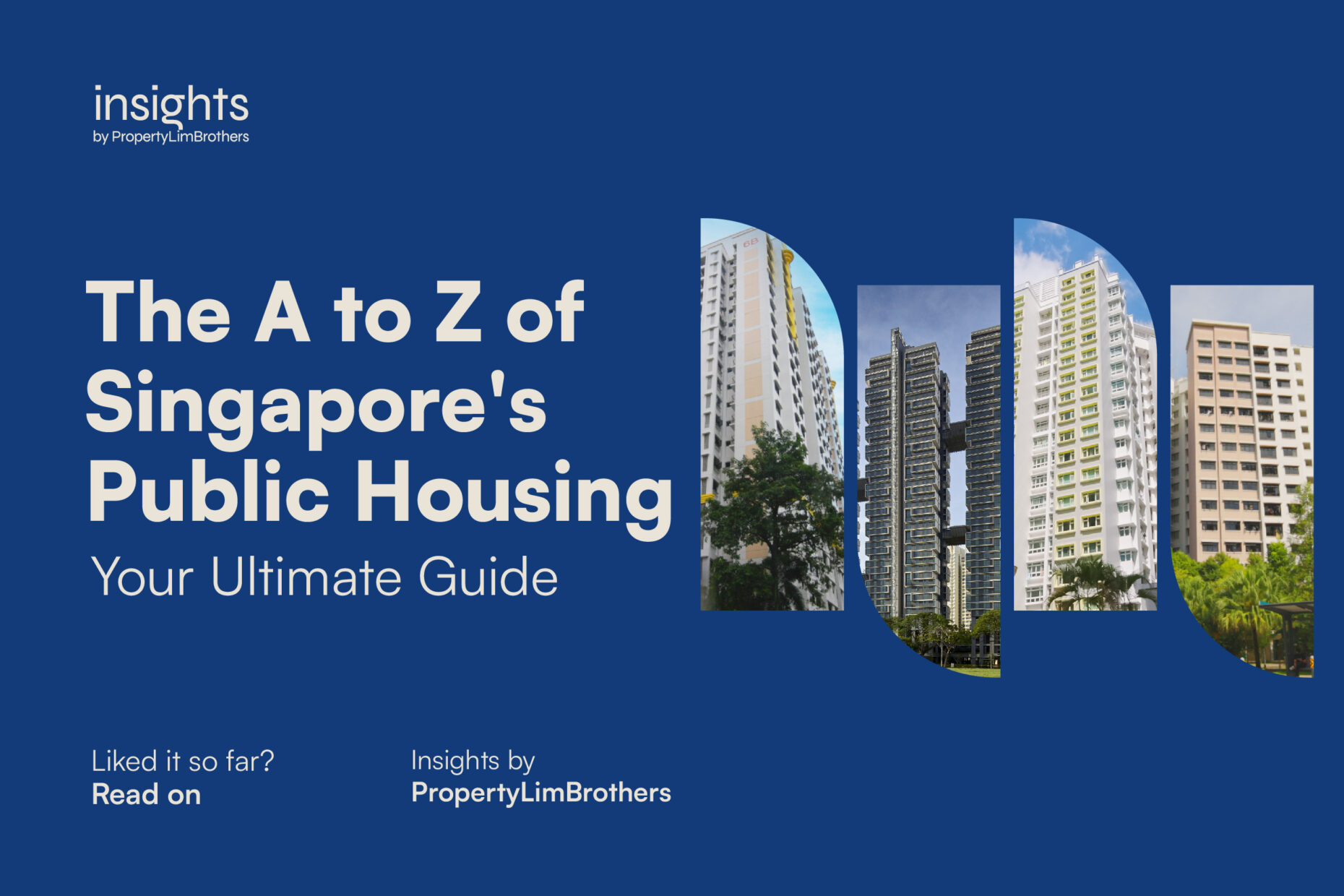
Singapore’s residential market has come a long way since independence. Off the top of your head, what are the two main types of properties? You are right if you mention HDBs and private properties. They form the main categories of residential properties in Singapore. Under these umbrellas, did you know there are over 15 different housing units?
This article will introduce you to past and present HDB schemes and cover some limited-edition housing types!
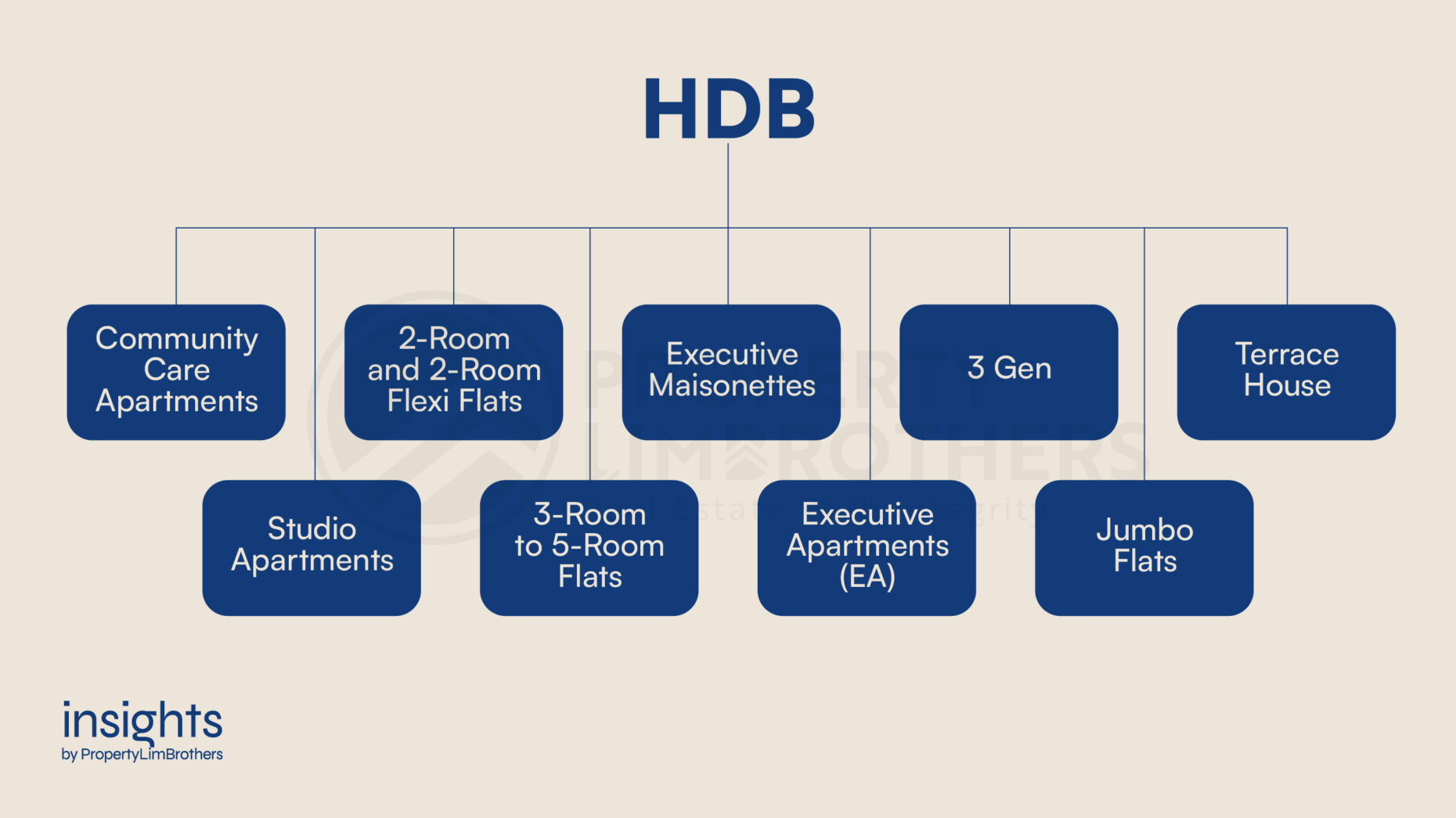
The Past & Present of HDB Schemes
Since its inception, the Housing Development Board has enacted numerous schemes to meet the different needs of the community. Although HDB focuses on public housing, HDB has teamed with the private sector and property developers to offer various accommodations. Here are the four significant schemes with flats available in the market:
1. Build-To-Order (BTO)
Many millennials may be familiar with the phrase “BTO ai mai?”. After reaching a demand quota, HDB begins the construction of developments, thus the term ‘Build-to-Order’. The BTO exercise is one of the ways HDB sells new units with intact leases after the end of HDB’s Registration for Flats System. A unique housing type you can find is Community Care Apartments, HDB’s latest joint offering with MND and MOH. BTO launches within specific areas, such as the city centre, will fall under the Prime Location Housing Model. Despite being termed a ‘housing model’, housing types available are the same as in other locations.
2. Housing and Urban Development Company (HUDC) Scheme
Housing and Urban Development Company (HUDC) Co. Pte Ltd set up the scheme in 1974 to accommodate Singapore’s ‘sandwich class’ who did not qualify for HDB flats or could afford private properties at the time. Subsequently, the HDB took over the scheme’s management and privatised the projects under the scheme. Braddell View was the last of the 18 HUDC projects privatised in 2017.
What makes these developments different from HDB flats? HUDC flats had larger square areas than typical HDB flats and amenities reminiscent of private properties at the time. Some projects have maisonette units which are no longer built today! Although these projects are no longer public housing, some have en bloc and redeveloped into some of Singapore’s iconic developments, such as D’Leedon and The Interlace.
3. Executive Condominium (EC) Housing Scheme
Enacted in 1999, the EC scheme also serves the middle-class population of Singapore who is not eligible for HDB flats but finds private properties hard to reach. Executive Condominiums are public-private hybrid models of subsidised housing by the government while being built and sold by private property developers.
This scheme seems to be a newer and improved replacement of the HUDC scheme, where owners can enjoy more facilities and have the opportunity to sell to foreigners in the future.
You can expect full condominium facilities like tennis courts and swimming pools from EC developments. Unlike owning private condominiums, EC owners are subject to eligibility conditions and restrictions by HDB until the 11th year. Once the 11-year mark is hit, ECs become private condominiums and fall under private properties.
4. Design, Build and Sell (DBSS) Scheme
“DBSS Flats? Are they related to the bank?” DBSS or the Design, Build and Sell Scheme was a short-lived scheme between 2005 to 2011 where private developers would design and build the flats while HDB would sell the respective units to buyers. Constructed with unique architectural facades, DBSS owners must abide by specific guidelines when renovating their units.
Despite being HDB flats, you can find condominium-like features like balconies and study rooms. You can find these 13 DBSS developments across Singapore, with Tampines having the most projects.
Having explored the various schemes HDB enacted, the age-old question is…
How many types of HDB are there?
1. Community Care Apartments
As Singapore’s ageing population grows more prominent, HDB seeks programmes to keep up with the needs of seniors. Community Care Apartments are one of them. This collaboration with the Ministry of National Development and the Ministry of Health aims to provide assisted living and encourage independent living amongst seniors above 65 years old. Creating the development with seniors in mind, you can expect wheelchair-friendly washroom facilities, built-in wardrobes and plenty of communal spaces for seniors to interact with each other.

HDB piloted the programme in 2021 at Bukit Batok, and the second release was recently in the November 2022 BTO exercise alongside 751 other units at Queensway Canopy. Each apartment unit is around 32 square metres after factoring out the air conditioner ledge. In a typical apartment floor plan, there is no wall between the rooms; instead, residents can use a sliding partition whenever they want.
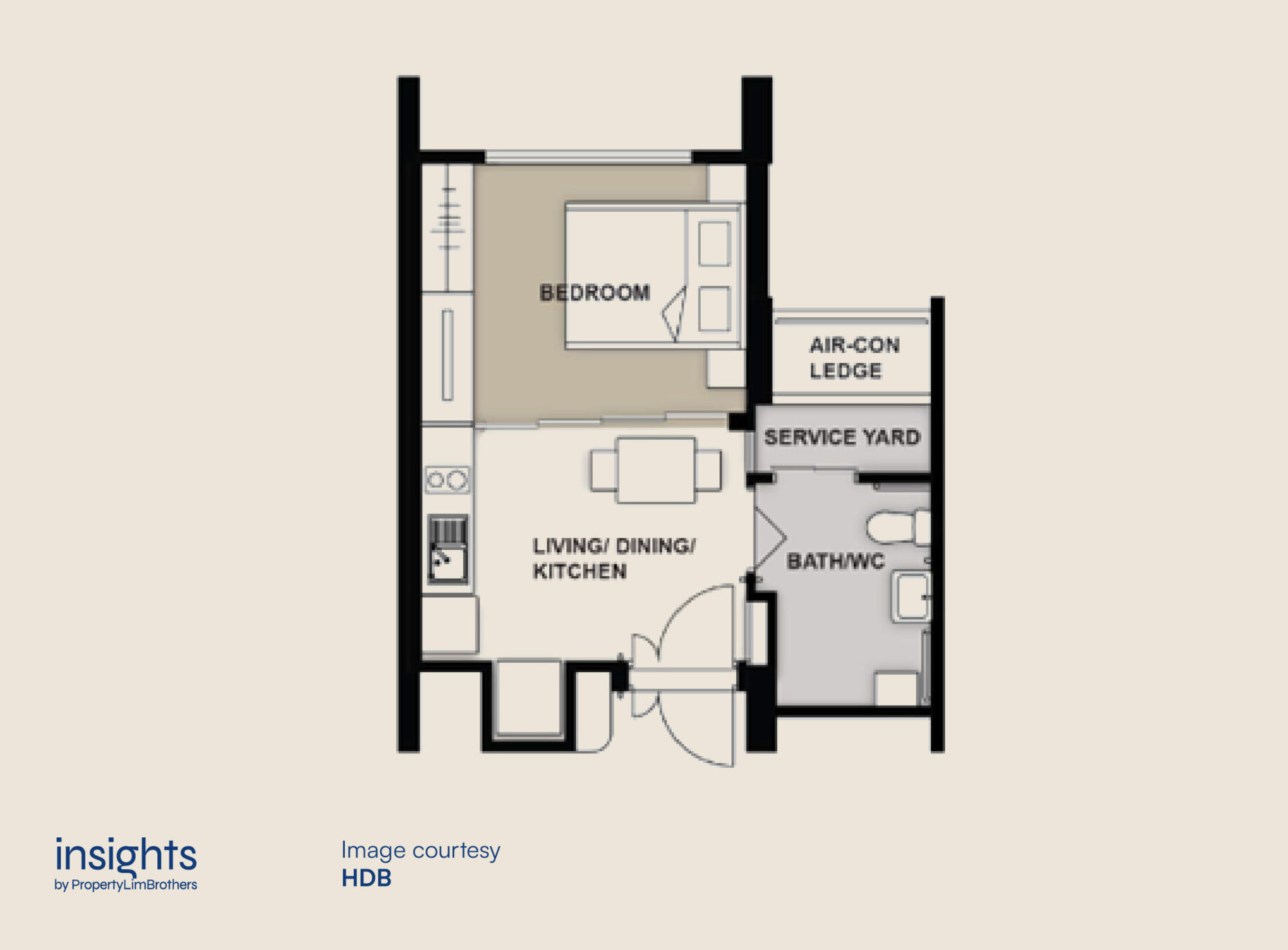
A unique feature of these flats has to be the mandatory basic service packages for residents. Under the basic package, a community manager supports seniors’ living experiences. Depending on the needs and preferences of the seniors, they may also opt for additional services such as housekeeping and meal service.
So far, there is yet to be any news of a third instalment, but who knows? We might see Community Care Apartments all around Singapore in the future.

2. Studio Apartments, 2-room & 2-room Flexi Flats
Before the 2-room Flexi Flats we know today, there were two schemes: Studio Apartment and 2-room flat schemes. As HDB stopped producing small flats in 1998, the creation of studio apartments served as smaller, short-leased housing options for seniors. HDB re-introduced the production of 2-room flats in 2006 to accommodate lower-income families and singles but subsequently merged the initiatives. While you can still purchase 2-room flats in the market, any new units from 2015 are considered Flexi flats.
Created as an option for seniors above 55 years old, the ‘Flexi’ in the namesake refers to flexible short-term leases. Seniors are guaranteed at least 40% of the 2-room Flexi flats in BTO exercises, with half of the quota reserved for those eligible for the Senior Priority Scheme. Those who do not fit the criteria of the Short Lease Scheme but may continue to purchase 2-room Flexi Flats will be subjected to the full 99 years lease. Do note that owners of short-leased flats cannot sell their properties in the open market and must return the flat to HDB.
On HDB’s website, you may notice two types of Flexi flats available. What is the difference between Type I and Type II flats? As seen in the floor plans below, Type II flats are slightly bigger than Type I ones but overall, both share a similar layout.
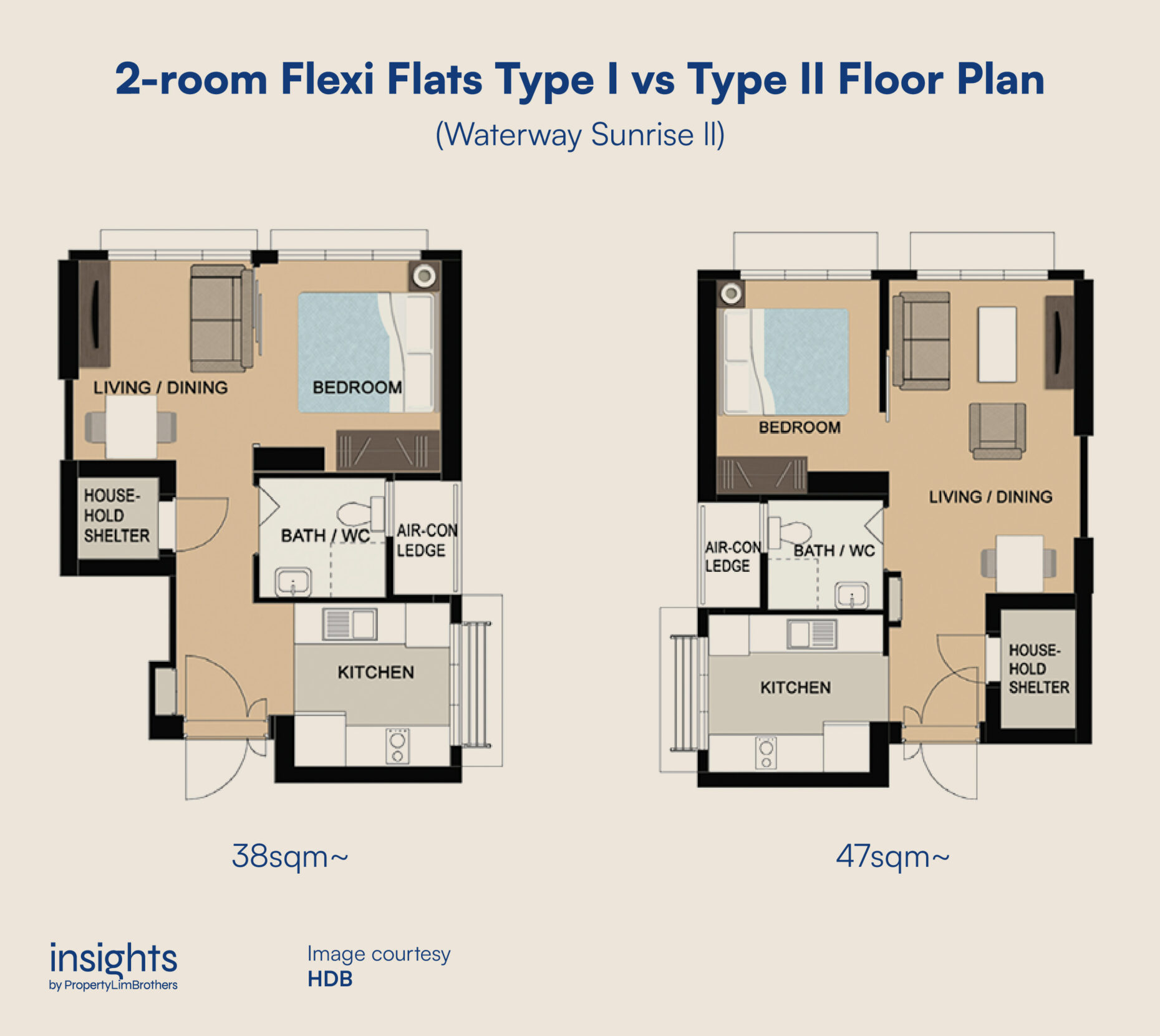
3. 3-room to 5-room Flats
3-room to 5-room flats make up the majority of residential dwellings in Singapore. Did you know that not all developments offer all the room types? Despite the difference and term difference, both 4-room and 5-room flats offer 3 bedrooms with 5-room coming with a suggested study. If we are referring to the chances of balloting each type of unit in a BTO exercise, you will find a higher success rate with 3-room flats. Observing the past exercises, you will notice that the application rate of 4 & 5-room flats are typically higher than 3-room ones.
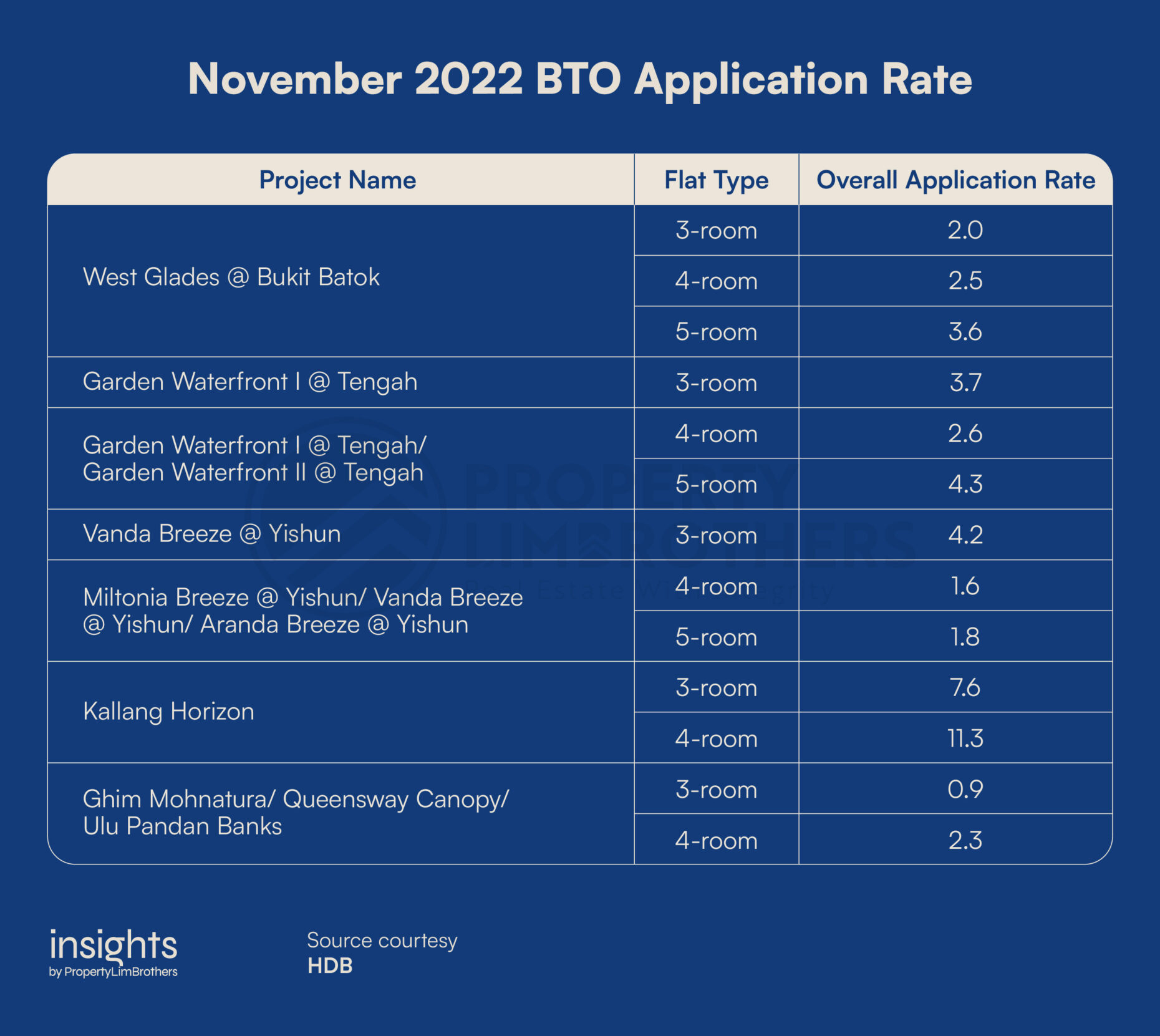
4. Maisonettes

Maisonettes are rare in the market. It is a two-floor unit in our high-rise buildings. HDB offered these flat types in new flats from 1983 to 1955, spread across 23 towns in Singapore. Together with Executive Apartments and Jumbo flats, they form the trio of the largest flats developed by HDB. The floor plan resembles that of a landed property with a kitchen, living room and dining room on the first floor and bedrooms on the second floor.
Three types of maisonettes are available in the market; penthouse, executive and 5-room. Penthouse maisonettes are, as you imagine, located on the top floors of developments and have an open concept on the second floor. Executive maisonettes include a balcony area; you can find a study or bedroom on the first floor of 5-room maisonettes.
Check out Charline who introduces us of a top-floor executive maisonette near Potong Pasir MRT!
5. Loft Units
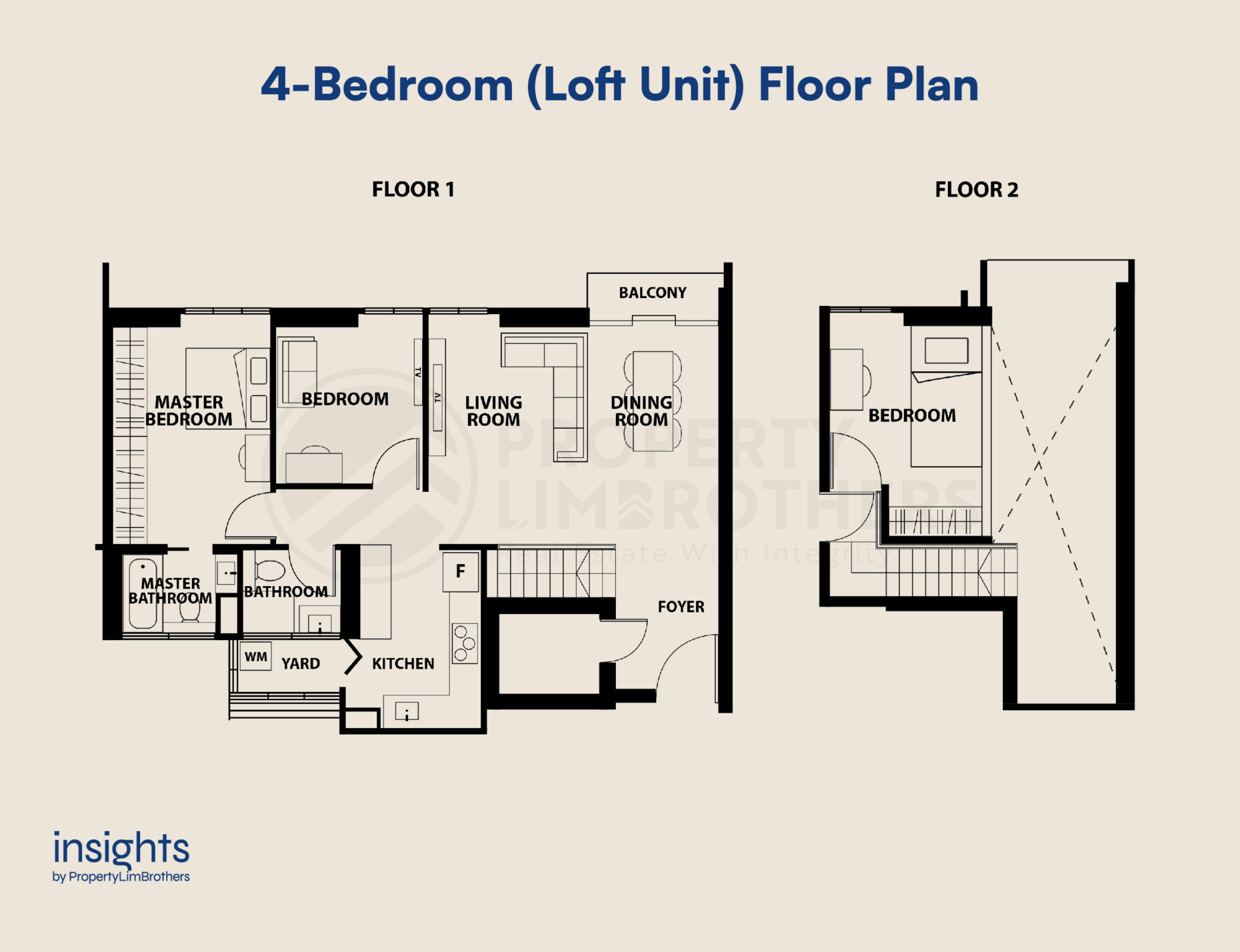
While not officially a HDB type, loft units are newer and more ‘evolved’ versions of maisonettes that you can find in more recent BTO developments. Although not as big as its predecessor, loft units are generally larger than other BTO flat types. When resold, they are considered regular 4/5-room types depending on the bedroom types.
Unit layout-wise, bedrooms are located on both floors of loft units, while most maisonettes in the market have only bedrooms on the first floor. While there is no compiled list of loft units in Singapore yet, you can find these rare units at:
- SkyTerrace@Dawson (26 loft units out of 758 total units)
- Treelodge@Punggol (14 loft units out of 712 total units)
- Punggol Sapphire (23 loft units out of 760 total units)
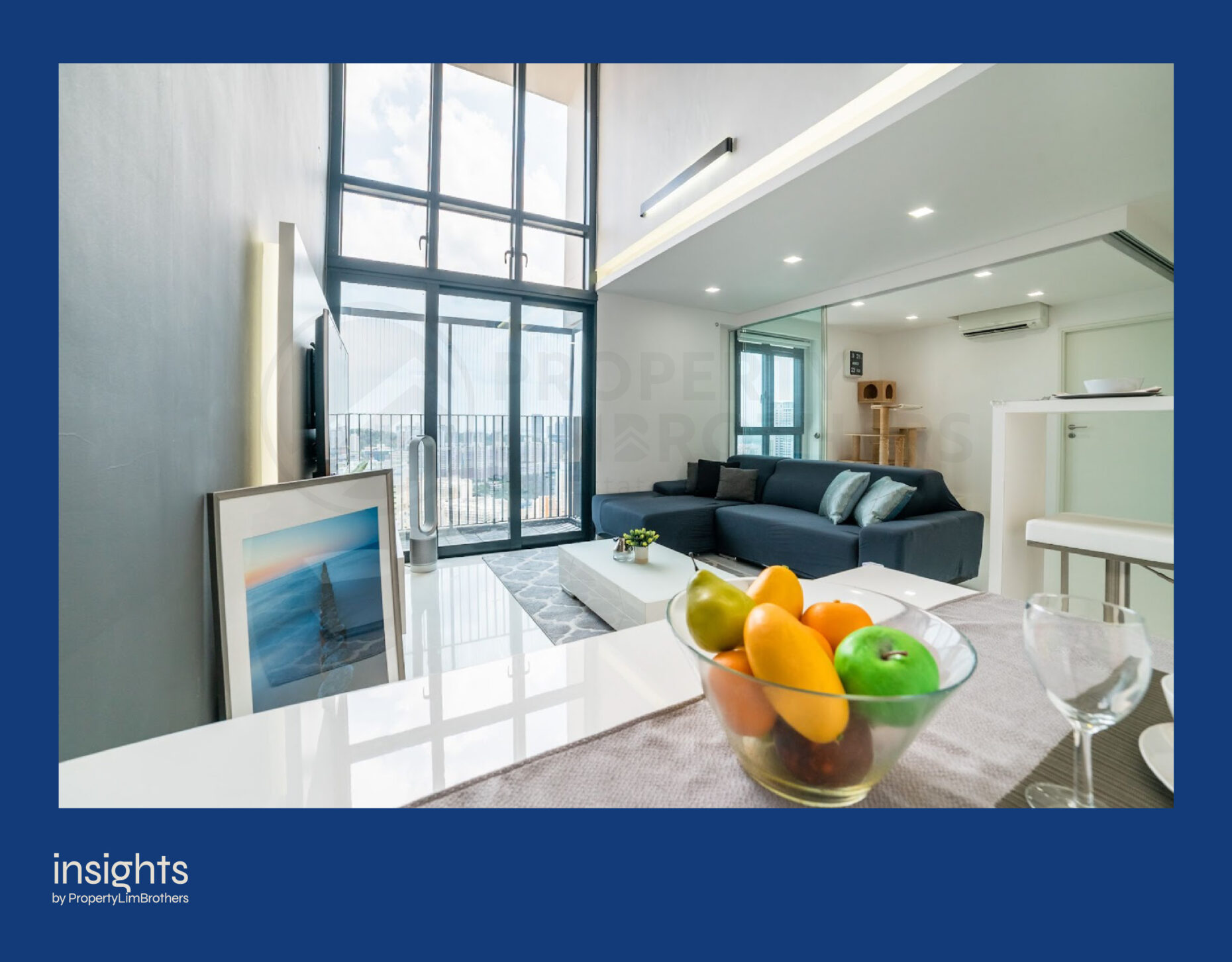
Check out Skyterrace @ Dawson’s loft units as Caline, Adrian & Jesley bring you on Signature Video Home Tours!
6. Executive Apartments (EA)
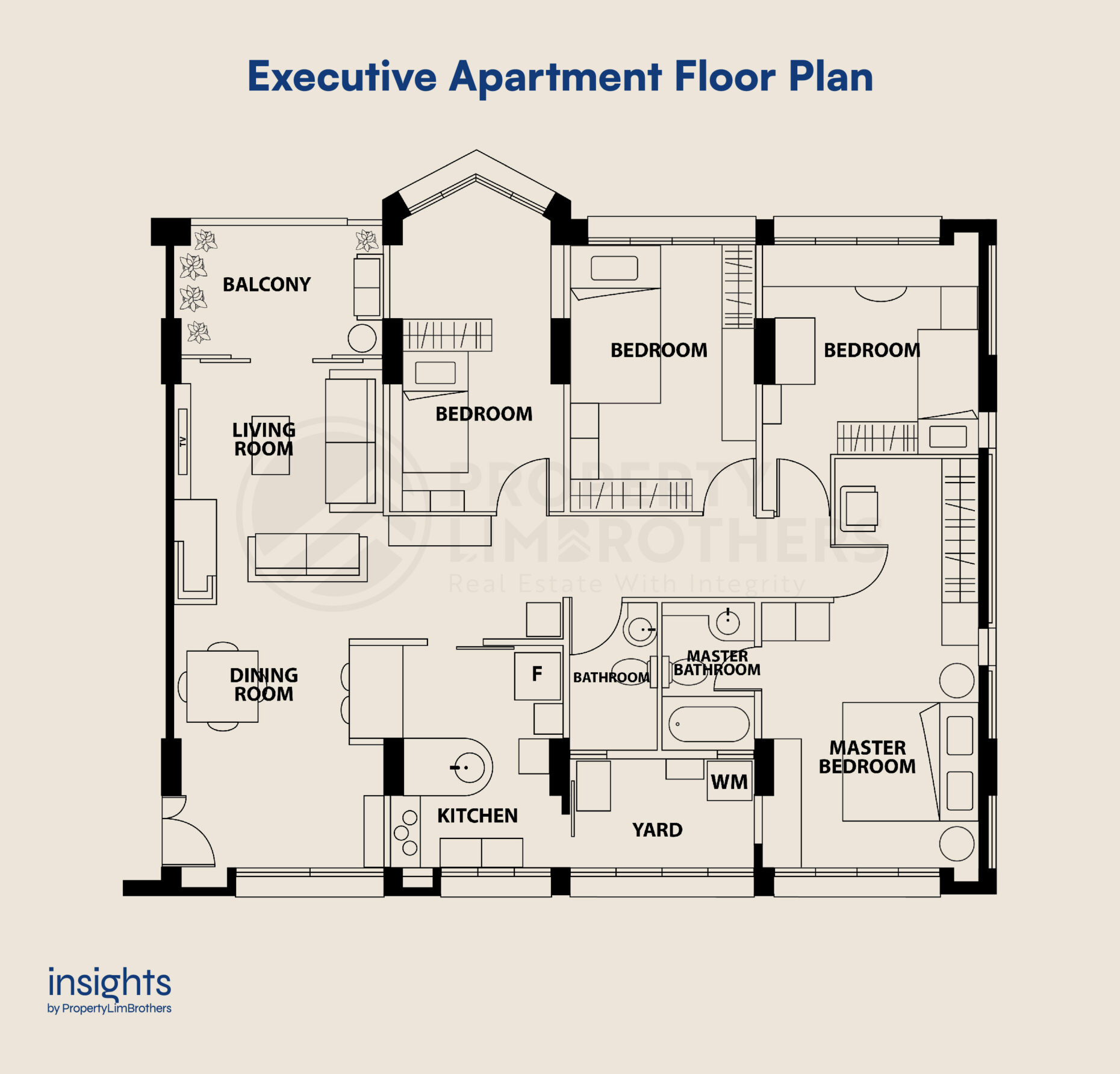
Offered as a bigger alternative to 5-room flats from 1984, you can find EA across mature and non-mature estates in Singapore. It has three bedrooms and two bathrooms. Similar to maisonettes, you can find some units with balconies and extra space for a possible study or bedroom.
Check out Angela in a bleubricks 5-room executive unit home tour!
7. 3 Gen Flats
To support the needs of extended family staying together, HDB introduced 3 Gen flats in BTO from 2013 onwards. Built with four bedrooms, 2 with adjoining bathrooms, 3 Gen flats are bigger than average BTO 5-rooms but smaller than Maisonettes and EA. This flat is exclusive to multi-generational families where the bedrooms with adjoining bathrooms are located on opposite ends of the unit. Even after MOP, owners cannot rent out the unit and may only sell to other multi-generational families.
8. Jumbo Flats

Jumbo flats are the largest square area units in the resale market, either pre-built by the government or part of HDB’s Conversion Scheme. The government merged over-supplied flats in 1989 as a one-time effort to deal with unsold units. Mainly situated in Woodlands, some units go up to 7 rooms! Today, you can also find these 2,900-odd flats in Yishun, Tampines, Bedok and Jurong East.
Did you know President Halimah Yacob and her family lived in a Yishun jumbo flat for over 30 years? Initially intending to stay at her flat for her presidential term, we can tell that she enjoyed the amenities Jumbo flats offer.
Under HDB’s Conversion Scheme, adjoining flat owners may convert two 3-room or smaller units into one if they meet the eligibility criteria. Note that you cannot subdivide converted units again, and a resale levy will apply when selling these houses.
Overall, the vast space available allows for multi-generational living, and renting out parts of a jumbo flat can serve as passive income. Check out how Christina & Melvin sold a Jumbo unit in 4 weeks!
9. Terrace House
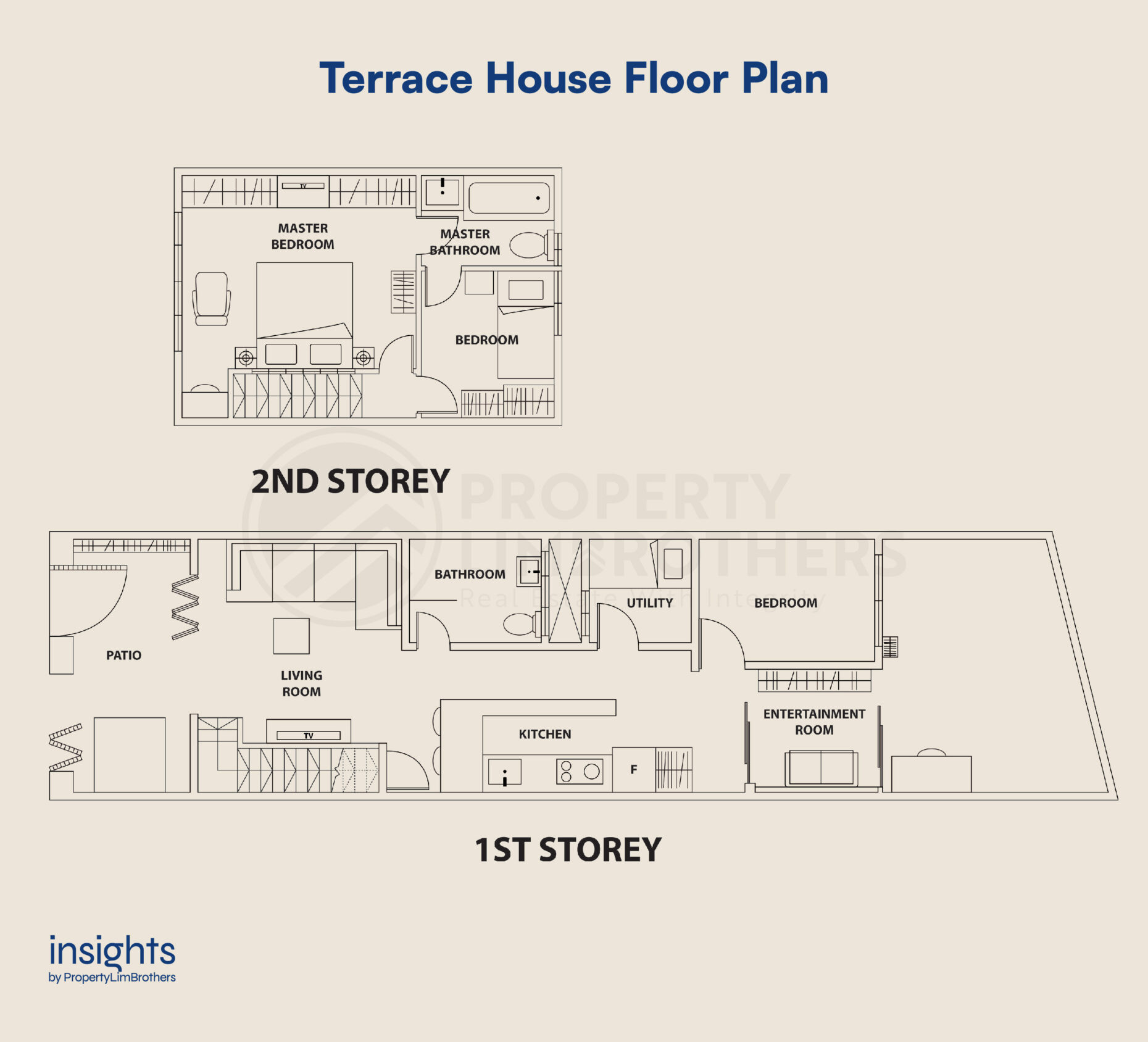
Landed public housing. Can you believe it? There are 285 HDB landed properties, 200 of which are in Whampoa and the rest in Stirling. Before HDB, the British Government set up Singapore Improvement Trust (SIT) to develop public housing our the early days.
SIT developed and managed these landed housing before Singapore’s independence. When HDB came into existence, they took over the houses and issued homeowners fresh 99-year leases in the late 1960s. Leases in Whampoa started in 1972, while leases in Stirling began in 1968.
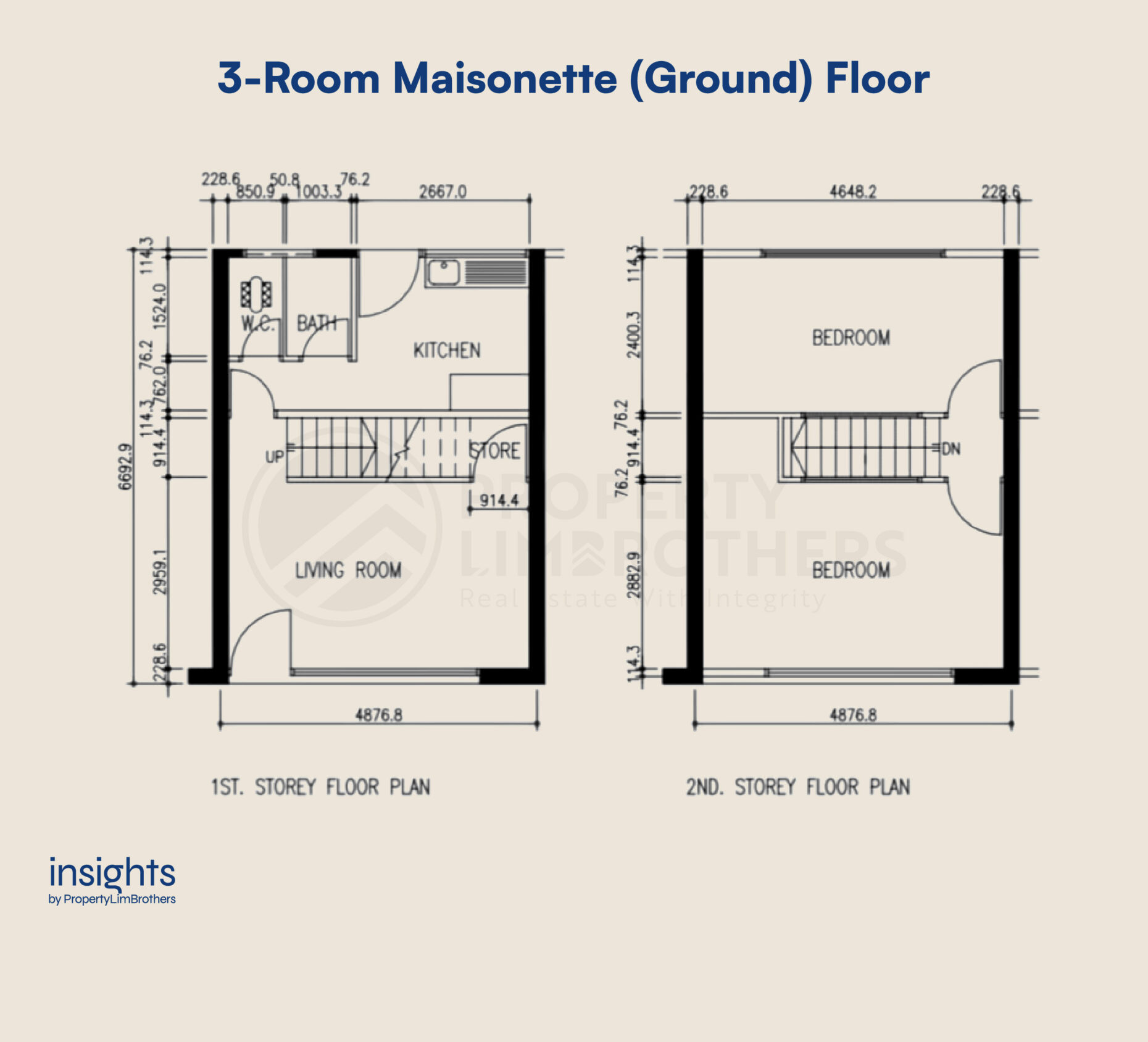
A fun fact is that if you retrieve a floor plan for one of the units, you will notice that it is classified as a maisonette. Like their high-rise counterparts, terrace owners have public parking spaces and block plates on the side of the building. With renovations done to some units and the availability of corner terraces, you might not recognise these limited edition properties from private terraces.
Discover this HDB landed home tour by Jesley!
Final Thoughts
We hope you have learned a thing or two about Singapore’s numerous public housing types. From two-floor units to ultra sized Jumbo flats, there is sure to be a unit that suits your needs.
Over the years, we also see HDB creating different schemes and floor plans to keep up with our societal needs. In the 1970s, HUDC schemes provided options for Singapore’s sandwich class, and in line with our current ageing population, seniors may purchase Community Care apartments, studio apartments or flexi-flats. These changes in our public housing landscape emphasise how HDB has carefully planned and become more inclusive. It is no wonder that Singapore’s public housing and home ownership are recognised globally!
Stay tuned for articles covering private housing types and a deeper dive into your favourite housing type. Till next time!







